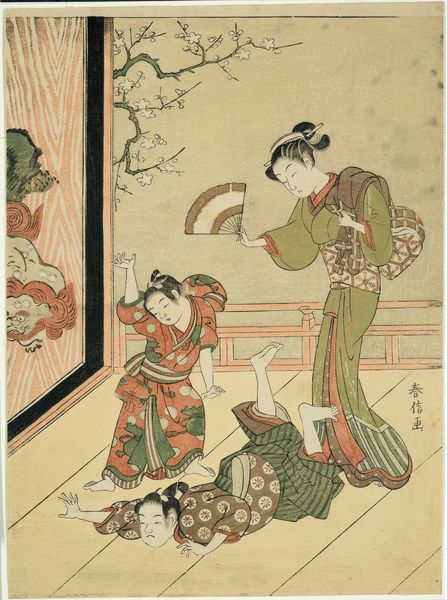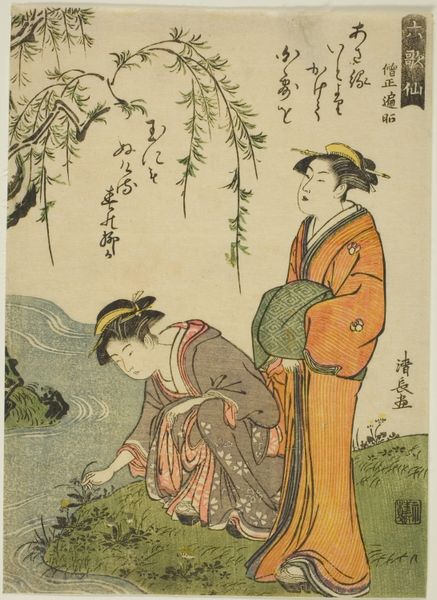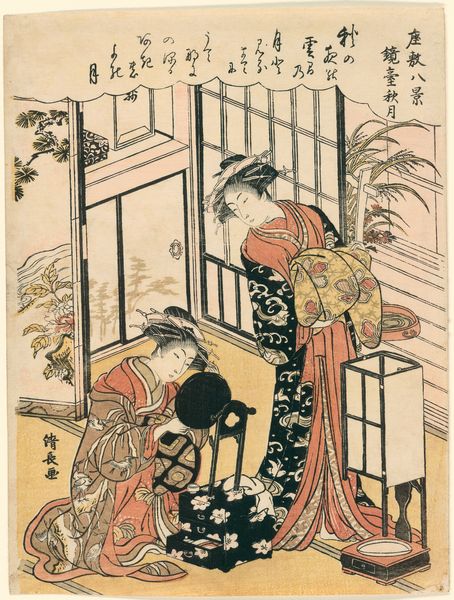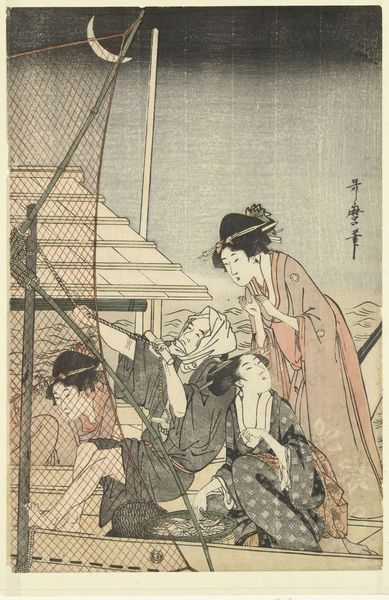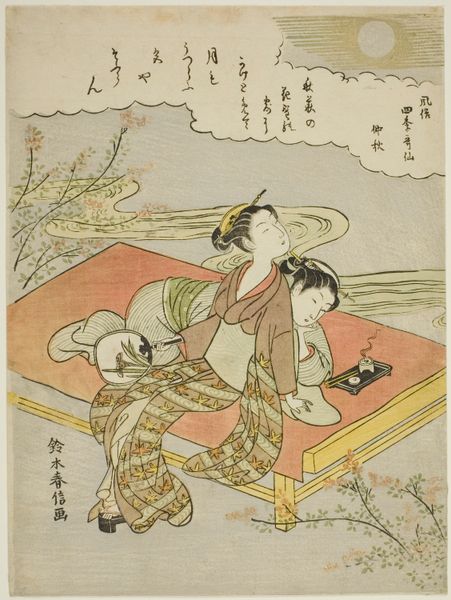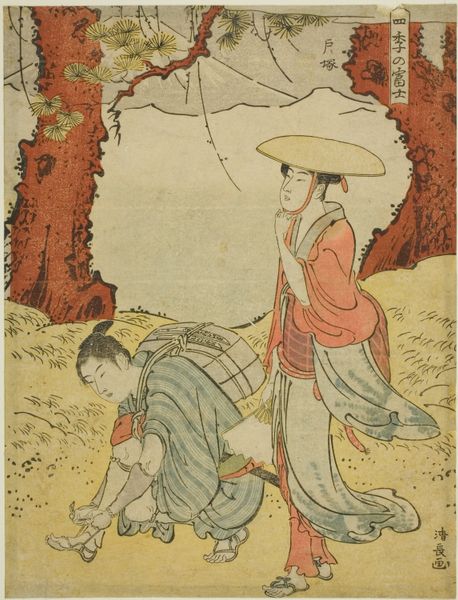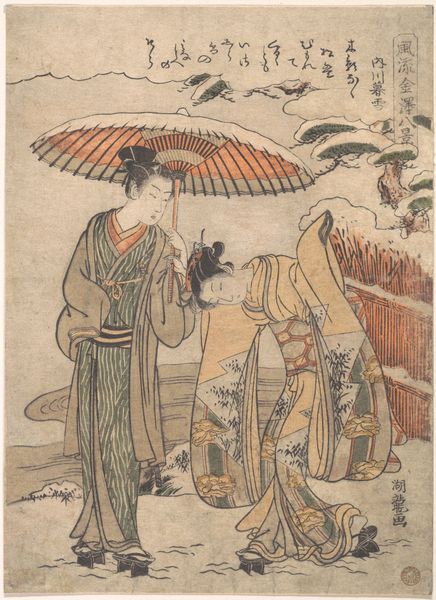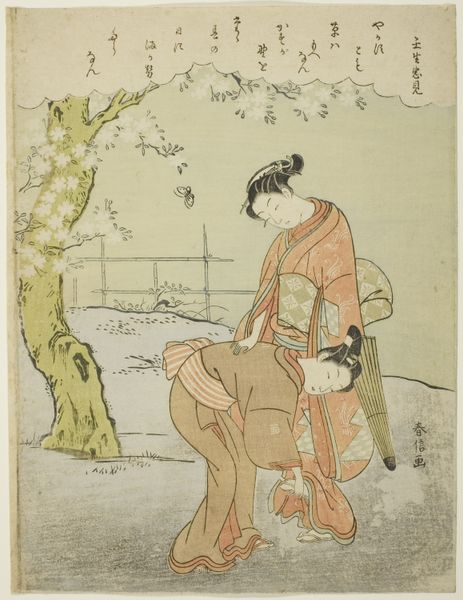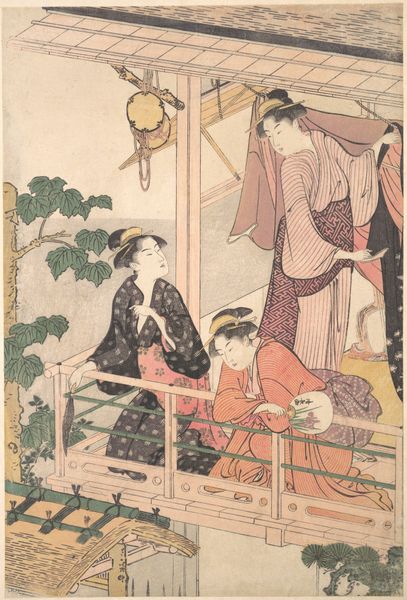
Dimensions: 11 1/2 x 8 3/8 in. (29.2 x 21.3 cm)
Copyright: Public Domain
This print was made by Suzuki Harunobu in eighteenth-century Japan using a technique known as *nishiki-e*, or brocade printing. These prints were made with multiple woodblocks, one for each color, allowing for a richness previously unseen. Looking closely, you can see how each element of the image—the figures, the bamboo fence, even the falling snow—required a separate block. The key block, which defined the outlines, would have been carved first, and then the other blocks aligned to it with incredible precision. This painstaking process speaks to a society valuing refinement and technical mastery. But it also speaks to the economics of printmaking; a division of labor between artist, block cutter, and printer, each relying on the other’s skill. The beauty of the final print belies the labor involved in its production. By understanding the process, we gain a deeper appreciation not only for the artistry, but also for the social and economic context in which it was created.
Comments
No comments
Be the first to comment and join the conversation on the ultimate creative platform.
